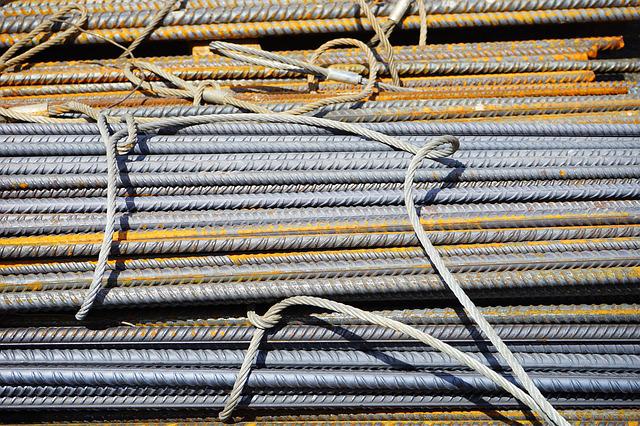Various Metals for construction works be broadly classified as ferrous metals and non-ferrous metals.
This section explains the properties and uses of ferrous metals and the importance of non-ferrous materials like aluminum and copper.
Table of Contents
Ferrous Metals
Ferrous material is one in which iron is the main constituent. Iron ore is first converted into pig iron and then pig iron is subjected to various metallurgical processes to mix different percentages of carbon and to get the following three useful ferrous materials:
- Cast iron—carbon content 1.7% to 4.5%
- Wrought iron—carbon content 0.05% to 0.15%
- Steel—carbon content 0.25% to 0.25%
All ferrous materials contain about 0.5 to 3% silica, less than 2% manganese, 0.15% sulfur, and 0.6% phosphorous.
1. Cast Iron: Important properties of cast iron are:
- Compression strength is 700 N/mm2 and tensile strength is 150 N/mm2.
- It is brittle and does not absorb shocks
- Its specific gravity is 7.5.
- Its structure is coarse, crystalline, and fibrous.
- It cannot be magnetized.
- Does not rust easily.
- It has a low melting point of about 1200°C.
Uses of Cast Iron:
- It is used for making rainwater and sanitary pipes, sanitary fittings, and manhole covers.
- It is used for making railings and spiral staircases.
- Fire gratings covers for pumps and motors, and brackets are made with cast irons.
2. Wrought Iron: It is almost pure iron. It contains less than 0.15% carbon. Attempts are made to reduce the other impurities during the process of manufacturing.
Properties of Wrought Iron:
- . Its ultimate compressive strength is 200 N/mm2 and its ultimate tensile strength is 375 N/mm2.
- It is ductile and brittle.
- Its unit weight is 77 kN/m3.
- It melts at about 1500°C. It becomes so soft at 900°C that two pieces can be joined by hammering.
- Can absorb shocks very well.
- It forms temporary magnets but it cannot be magnetized permanently.
- It rusts more easily.
Uses of Wrought Iron:
- It is used for making nails nuts and bolts, wires, and chains.
- It is used for making roofing sheets, grills, fences, window guards, etc.
3. Steel: It is an extensively used building material. The following three varieties of steel are extensively used:

- Mild steel
- High-carbon steel and
- High tensile steel.
(a) Mild Steel: It contains a maximum of 0.25% carbon, 0.055% of sulfur, and 0.55% of phosphorus.
Properties of Mild Steel:
- It is malleable and ductile
- It is more elastic
- Can be magnetized permanently.
- Its specific gravity is 7.8.
- Its Young’s modulus is 2.1 × 105 N/mm2.
- It can be welded easily.
- It is equally strong in tension and compression.
Uses of Mild Steel:
- Round bars are extensively used as reinforcement in R.C.C. works.
- Rolled sections like I, T, L, C, plates, etc. are used to build steel columns, beams, trusses, etc.
- Tubular sections are used as poles and members of trusses.
- Plain and corrugated mild steel are used as roofing materials.
- Mild steel sections are used in making parts for many types of machinery.
(b) High Carbon Steel: The carbon content in this steel is 0.7% to 1.5%.
Properties of Carbon Steel:
- It is tougher and more elastic compared to mild steel.
- Welding is difficult
- It can be magnetized permanently.
- Stronger in compression than in tension.
- It withstands shocks and vibrations better.
Uses of High Carbon Steel:
- It is used for making tools such as drills, files, and chisels.
- Many machine parts are made with high-carbon steel since it is capable of withstanding shocks and vibrations.
(c) High Tensile Steel: It contains 0.8% carbon and 0.6% manganese. The strength of this steel is quite high. High-tensile steel wires are used in prestressed concrete works
We hope this article helped you learn about Metals for Construction. You may also want to learn about The Best Construction Management Schools Right Now, Best Types of Kitchen | All You Need To Know- Right Now, Home Furniture | Meaning and Type, and What is an Architect?
If you liked this article, please Join WebsiteForEngineers on Telegram, and you can also find us on Pinterest, Twitter, and Facebook.


